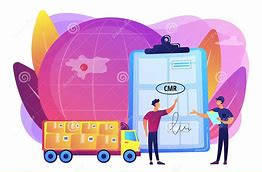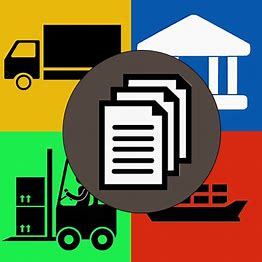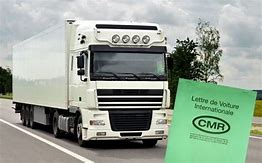
The movement of goods forms the lifeline of trade and commerce. However, the very act of transporting merchandise across geographies can become procedurally challenging if proper documents do not support it. Especially with GST regulations mandating e-way bills for inter-state and intra-state consignments above a value threshold, businesses must put in place a robust goods transport documentation process.
This article discusses the role documentation plays in a smooth GST-compliant goods transfer. It talks about the legal necessities, industry insights, common pain points, and best practices around the preparation of LRs, invoices, and delivery challans that power e-way bill generation.
The Significance of Transport Documents in Ensuring E-Waybill Compliance
Under the Goods and Services Tax regime, e-way bills have emerged as indispensable for legit goods movement. An e-way bill is mandated when transferring taxable products worth more than Rs. 50,000 within or outside a state. It is electronically generated, containing details like place of delivery, HSN code, tax values, etc.
However, vital information for e-way bill creation first resides in physical documents like tax invoices, transport receipts, delivery notes, and LRs. If such paperwork meant for the movement of goods lacks accuracy or completeness, it impacts e-way bill generation, leading to compliance failures.
For instance, an incorrect product description in the supplier invoice can cause HSN code errors in the e-way bill. Such mismatches frequently cause goods to be detained by tax officials until they are reconciled. Similarly, the e-way bill directly pulls place of supply details from transport-related documents. Wrong addresses can again attract penalties for tax evasion.
Hence, the comprehensiveness and accuracy of LRs, invoices, delivery challans, and other documents that underpin goods transfer are crucial for hassle-free e-way bill creation and avoiding disruptions in movement.
Businesses must put in place standardized, templated, and stringently validated processes so the paperwork for product transportation remains precise and addresses every GST requirement.
Also Read: Understanding the Significance of Distance and Transport Routes in E-Waybill Compliance
Legal Necessities Around Transport Documents for GST Compliance
The Central Board of Indirect Taxes and Customs (CBIC) has laid down specific rules around the documents needed to legitimately transfer goods in a GST regime. Key requirements are:
- Tax Invoice: A registered person who intends to move products from one place to another as a supply needs to issue a tax invoice as per Section 31 of the CGST Act, 2017. This document captures the product rate, value, and applicable GST for input tax credit availment.
- Delivery Challan: Where transportation does not involve a supply like goods sent on approval or job work, CBIC mandates the issuance of a delivery challan in lieu of an invoice. It must detail the address of the goods sender or receiver, supply details like quantity or description, and the signature of the supplier.
- E-Way Bill: An electronic way bill becomes necessary if taxable products worth more than Rs. 50,000 are supplied within or between states. It mandates key transport-related information, including the value or HSN code of items, the GSTIN of the parties involved, and the vehicle number.
- Documents to Accompany Goods: As per Rules 55A and 138A, specified documents must accompany the person-in-charge or vehicle transporting taxable products:
- Tax invoice or delivery note if the e-way bill is not generated
- Copy of the e-way bill or e-way bill number mapped to the RFID device
Hence, complying with the documentation requirements specified by law is vital for legitimate goods movement and avoiding penalties. Businesses must put in place the needed processes.
Understanding Transport Documents’ Criticality Across Industries
While transport documents serve as a lifeline for GST compliance across sectors, some industries see exponential volumes of physical paperwork daily, aiding the movement of goods. We take a look at a few sectors below:
-
FMCG:
Fast-moving consumer goods like packaged foods, toiletries, etc. have extensive distribution, reaching retail outlets nationally. Tax invoices are generated in lakhs, corresponding to dealers’ and distributors’ supply. Delivery challans support transfers for demos, short-expiry goods returns, etc. The sector is significantly document-intensive.
-
E-commerce:
As customer orders translate into frequent inter/intrastate dispatch from sellers to regional hubs to end-addresses, e-commerce logistics involve high documentation volumes—delivery challans especially. E-way bill-integrated apps, barcode-based sorting, and automated data uploads facilitate compliance.
-
Auto Components:
Components and sub-assemblies repeatedly get transported between vendors, OEM manufacturing plants, and aftermarket distribution hubs spanning states. Optimizing document flows with LRs and tax invoices for receipts and issues using ERP integration is vital.
-
Textiles & Apparels:
Here, sub-assemblies regularly move on job work between facilities before final transfer on purchase orders. So whether raw material invoices or job work delivery notes, documents must capture every transaction or transport leg for ITC tracking.
-
Electrical Equipment:
Tax invoices for B2B movement between production plants, warehouses, and turnkey project sites, coupled with dealer/retailer delivery notes, grow exponentially given frequent interstate consignments.
Pain Points in Compiling Transport Documents for E-Waybill Compliance
While well-designed templates and IT tools can optimize goods transfer documentation processes, some common pain areas do exist:

-
Data Errors
Incorrect product or party details and address typos directly affect data captured in tax invoices and delivery challans. Such issues getting transported into e-way bills via manual or API transfers attract penalties. Fat finger mistakes further amplify voluminous paper-based processes.
-
Version Control Failures
The absence of document version control, like drafting tax invoices or bills for modification before finalization, creates an information mismatch. Analytics on goods supplied or transferred get impacted.
-
Document Authentication
Goods receivers not signing LR copies or collectors not providing acknowledged delivery challan copies lead to compliance issues during ITC claims or audits.
-
Authorization Gaps
Tax invoices and transporter job sheets lacking appropriate authority approvals enable the use of fake documents to transport goods illegally. They cause GST leakages.
-
Storage Overheads
Paperwork accumulation from goods movement makes storing transporter LRs, supplier invoices, etc. challenging. Retrieval inefficiency promotes process delays like e-way bill creation and reconciliation.
Common Pain Areas Around Transport Documents
| Issue | Description | Outcomes |
| Data Errors | Wrong product, party, or address details | E-way bill failure, goods detention |
| Version Control Gaps | Draft documents are not getting finalized. | Inaccurate goods transfer records |
| Authentication Lapses | No proof of delivery or receipt of goods | GST audit/ITC claim issues |
| Authorization Defects | Fake transport document usage | Tax evasion and leakage |
| Storage Inefficiency | Paperwork delays easy document retrieval. | E-way bill creation delays |
| Analytics Bottlenecks | Manual data compilation from paperwork | Ineffective goods movement monitoring |
Also Read: E-Way Bill For Job Work: Understanding The Compliance Requirements
Improving Transport Document Management for E-Waybill Compliance
Some ways businesses can address pain points and enhance processes around transport documents include:
-
Digitization
- Scanner Apps: Scan invoices and LRs and attach them to cloud repositories using mobile cameras for easy search and sharing.
- OCR Solutions: Automatically convert scanned images of paperwork into analyzable digital formats.
- EMR Systems: Fully digitize and organize all goods movement-related records with quick data capture and integrated workflows.
-
Standardization
- Templates: Create pre-approved templates for invoices, delivery challans, etc. based on legal needs with validations.
- Checklists: Ensure all essential details get captured through user checklists before finalization.
- Barcoding: Generate barcoded document numbers for easy sorting and storage. Attach barcoded receipt or dispatch stickers.
-
Value-Adds
- Analytics Dashboards: Generate real-time reports on goods-in-transit, GST impact, liability, etc.
- Collaboration Tools: Share digitized documents easily across departments and partners through portals.
- Automated Workflows: Tax invoice/delivery note data gets recorded in real-time via integration with billing and shipping software.
- Compliance Triggers: System alerts on expiry of e-way bill validity; goods nearing tax-exempt transfer limits, etc.
If you want to know how the bill to/ship to supplier affects the place of supply? Then you need to click on this blog link by Captainbiz.
Proactive Measures to Streamline E-Waybill Compliance
While robust goods documentation forms the nucleus for compliant movement, businesses can take some additional steps to bulletproof their e-way bill processes:
- Assess documentation needs: Based on the scale and frequency of dispatches, determine the type of documents required (tax invoice, LR, pro forma invoice, etc.).
- Understand the documentation rules: Keep abreast of regulatory mandates around documentation for goods transfer through official sources like GSTN and CBIC.
- Standardize templates early. Create approved templates for invoices, delivery notes, etc., incorporating all data fields necessary for e-way bill generation.
- Implement digitization: minimize manual processes and paper trails via scans and EMR systems for easy storage and retrieval of documents.
- Enable collaboration: Online document portals that authorize partners to access paperwork aid in speedy and accurate e-way bill creation.
- Integrate billing systems: Automatically capture invoice and delivery challan data in real-time in ERP software through APIs for downstream e-way bill creation.
Best Practices for Creating Robust Transport Documents
Some vital ground rules businesses must follow are:
- Use Approved Templates: Ensure only authorized tax invoice, LR, and delivery challan formats are utilized with mandatory headers and details.
- Validate Details: Tax ID, place of supply, and product information entered must be double-checked before finalization.
- Enable Online Approvals: Seek digital authorization on goods dispatch paperwork before sharing with partners or transporters.
- Freeze Information: Ensure data like quantity, product details on invoices, delivery notes, etc. don’t change post-sharing with counter-parties.
- Maintain Version History: All edits and changes to drafts before finalization must get logged through document numbering for audits.
Integrating Transport Documents Seamlessly with E-Waybill Systems
For businesses, manually sharing paperwork received from suppliers with logistics partners to raise e-way bills can increase lead times while also amplifying errors.
Leveraging technology for real-time exchange of data between partner systems aids in faster and more accurate e-way bills. Some leading practices include:
- Onboarding suppliers and transporters onto company portals provides seamless access to delivery notes, invoices, etc.
- Capturing advance shipping details like the tentative delivery schedule, item category, and estimated invoice value from vendors in purchase orders.
- Secure APIs that allow virtual handover of supplier invoice data from company ERPs to logistics provider TMS for e-way bills.
- Shared document repositories containing validated templates of invoices, packing slips, etc. are accessible to partners, facilitating standardized information availability.
- Barcoded documents enable easier organization of critical transport paperwork for movement-related compliances.
- Paperless workflows powered by electronic data sharing minimize document movement across parties.
Hence, interlinking OEM/supplier ecosystems with logistics providers using technology aids rapid, compliant documentation availability for e-way bill needs.
Technology Solutions for Seamless Transport Document Management
| Approach | Methodology | Benefits |
| Onboarding Partners | Transport/supplier portal access | Info availability directly from the source |
| Capture advanced data. | Embed the tentative dispatch plan and item data in the PO. | Accelerated e-way bill creation |
| Integrate via APIs. | Real-time invoice data transfer to logistics systems | Automated, compliant e-way bills |
| Common Repositories | Store-approved templates accessible to partners | Consistent, accurate documents |
| Barcoded Documents | Sort or organize critical paperwork easily. | Streamlined document management |
| Paperless Workflows | Electronic data sharing avoids manual document movement. | Faster yet simplified compliance |
Also Read: E-Waybill System: Enhancing Logistics And Supply Chain Management
Keeping Up with Changes in E-Way Bill Rules
Compliance requirements regarding documentation for goods transfers do see revisions based on changing business scenarios or plugging loopholes. For instance:
- The Delhi High Court judgment in 2020 stating GST would apply on alcohol MRP post-sales discounts led businesses to recast tax invoices for such goods.
- The e-invoicing mandate in 2020 being extended to companies beyond Rs. 500 crore turnover meant integration with IRN and GSTN for JSON data exchange and updating formats.
- The reduced e-way bill validity of 200 km per day for over dimensional cargo coming in 2021 called for suitable advice to transporters on documentation needs.
- Certain states providing exemptions from e-way bills for the transportation of specified goods within their jurisdiction require additional delivery notes.
- Changes in HSN codes from time to time warrant the realignment of supply invoices and item masters with revised codes to enable accurate product labeling in the e-way bill for movement.
Building the capability to tweak documentation templates quickly through in-house tools or external provider partnerships aids in the seamless adoption of changing norms for smooth goods movement.
The Strategic Relevance of Transport Documents
For businesses, documentation forms a starting point for compliance. Tax invoices, delivery challans, and LRs don’t just legitimize goods movement but also:
- Help determine effective tax rates and input credit eligibility for items supplied.
- Aid transporter selection based on past performance, risk category of goods, etc.
- Simplify filing accurate monthly GSTR-1 and GSTR-3 returns.
- Provide reconciliation support in case of e-way bills to GST deviations.
- Help ascertain actual freight costs for cost-to-serve insights.
- Strengthen internal controls to avoid cases of fake invoices misusing brands.
Hence, given the strategic influence, businesses must invest in streamlining transport documentation management with an end-to-end view, right from standardized templates to building performance dashboards around TATs.

Enhancing Goods Movement Compliance through Organized Documentation
For the logistics industry, resolving a goods detention scenario on road transport entails steep costs, from penalty payments, additional documentation, and follow-ups with officials to vehicle downtime. So enhancing compliance through the organized preparation of the underlying paperwork is vital.
Some leading practices include:
- Standardize Templates: Create master templates for invoices, delivery notes, etc. with logos, headers, and placeholders for mandatory fields based on legal needs to avoid data gaps.
- Centralize Document Storage: Maintain easily discoverable electronic repositories to store supplier invoices and LR copies using scans or smartphone uploads for instant availability.
- Built Review Workflows: Define document review timelines pre- and post-finalization, along with assigning owners to validate details, preventing errors.
- Enable seamless data sharing: digitally transmit invoices and shipping data between suppliers, logistics, and customer systems through portals or APIs, minimizing human errors.
- Simulate EWB Creation: Continuously test actual e-way bill generation by capturing sample goods receipt notes and transporter details to flag process gaps proactively.
Hence, intelligent use of process standardization, collaboration tools, and automation enmeshes compliance rigor across goods documentation scenarios—right from creation to archiving!
Strategies for Optimized E-Waybill Processes
For large manufacturers, distributors, and 3PLs, the high volume of inter- and intra-state movement of goods every day warrants streamlined documentation flows ahead of e-way bill creation since minor lag can multiply compliance failures.
Let’s discuss a few technology-led strategies enabling optimization:
- Unified Dashboards: Collates metrics from various transport events like goods inward, dispatch volume, vehicle check post data, and documentation. TATs to enable integrated visibility, helping transporters act swiftly
- Integrated Workflows: Online flow of LR/tax invoice data between supplier, company, and 3PL systems, enabling faster review and flagging of errors before goods move, requiring minimal manual intervention.
- Predictive Analysis: Machine learning algorithms continuously analyze past documentation accuracy patterns to determine expected gaps. Enables proactive mitigation.
- Real-time Tracking: GPS monitoring of vehicle movement data integrated with e-way bill deadlines from documentation flags expected breaches based on distance algorithms to facilitate timely extensions
- Chatbots: Automated human-like bots prompt transporters for scheduled document submissions or data reviews, providing the requisite templates through a conversational UI and promoting compliance rigor.
Hence, the adoption of emerging technologies like predictive analytics, real-time tracking, and conversational AI catalyzes a reduction in breaches arising from documentation delays or inaccuracies, enabling comprehensive compliance.
Conclusion
Like blood flowing through veins drives the human body, comprehensive documentation energizes the supply chain. Tax invoices, delivery notes, and transporter paperwork contain vital data needed for GST-compliant movement of goods.
Hence, it becomes imperative for businesses to standardize the associated processes leveraging technology, from pre-formatted templates minimizing data errors to mobile apps for on-the-go document management, including solutions enabling seamless partner collaboration.
While the language of business continues to incorporate modern terminology around AI and IoT, adequate thrust on getting the ‘basics’ of paperwork right remains’ mission critical’ for keeping India’s goods transport arteries robust in a dynamic GST regime!
Frequently Asked Questions
-
What documents are needed to accompany the goods being transported?
As per Rules 55A and 138A under the CGST Rules of 2017, the person transporting goods must carry a tax invoice, delivery challan, or e-way bill during transit. E-way bill copy, however, is not mandatory in cases of movement by rail, air, or ship.
-
How long are physical documents like invoices required to be archived?
As per Section 35 of the CGST Act, 2017, all accounts maintained by registered taxpayers, together with all goods and service-related documents, need to be retained for at least 5 years after the due date for annual return filing.
-
Can delivery challans be maintained digitally?
Yes, businesses can retain scanned soft copies or digitized images of delivery notes, provided they ensure such records stay authentic, accessible, legible, and unaltered during the document retention period mandated under GST laws.
